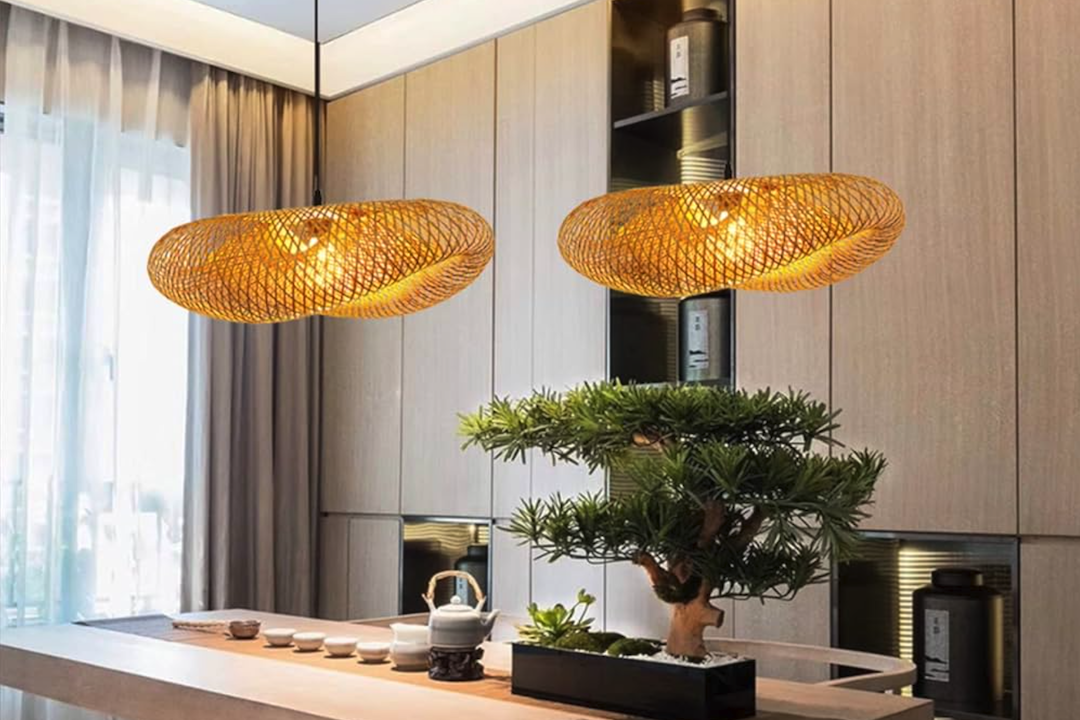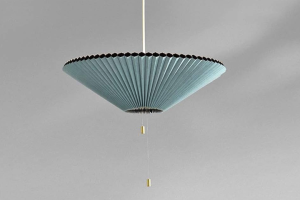
Rustic Charm: Restaurant’s Bamboo Leaf Chandelier Adds a Fisherman’s Touch
The creation of a chandelier often stems from a confluence of artistic vision and cultural significance, and the chandelier in question is no exception. Its design was inspired by the natural beauty of the surrounding landscape, particularly the lush bamboo groves that sway gently in the breeze. The designer sought to encapsulate the essence of these serene environments, translating the organic forms and textures of bamboo into a stunning centerpiece that would not only illuminate but also evoke a sense of tranquility.
This inspiration was further fueled by a desire to create a piece that would resonate with the local community, reflecting their heritage and connection to nature. In addition to the visual inspiration drawn from bamboo, the chandelier Hongfu also embodies a narrative of craftsmanship and tradition. The designer collaborated with local artisans who have honed their skills over generations, ensuring that each element of the chandelier tells a story.
The intricate weaving of bamboo leaves and the careful selection of materials were all deliberate choices aimed at honoring the age-old techniques that have been passed down through families. This commitment to authenticity not only enhances the aesthetic appeal of the chandelier but also serves as a reminder of the importance of preserving cultural practices in an increasingly modern world.
The Art of Bamboo Leaf Crafting
Bamboo leaf crafting is an ancient art form that has been practiced for centuries, particularly in regions where bamboo is abundant. The process begins with selecting the right type of bamboo, which is known for its flexibility and strength. Artisans carefully harvest the leaves, ensuring that they are at their peak freshness to maintain their vibrant color and durability.
Once harvested, the leaves undergo a meticulous preparation process, which includes cleaning, drying, and sometimes dyeing to achieve the desired hues. This attention to detail is crucial, as it directly impacts the final product’s quality and aesthetic. The crafting process itself is labor-intensive and requires a high level of skill.
Artisans employ various techniques to manipulate the bamboo leaves into intricate shapes and patterns. Some may use traditional weaving methods, while others might opt for more contemporary approaches that incorporate modern design elements. The versatility of bamboo allows for endless possibilities in terms of design, making it a favored material among artists and designers alike.
Each piece crafted from bamboo leaves carries with it a unique character, shaped by the artisan’s hands and vision, resulting in a one-of-a-kind creation that reflects both nature and human ingenuity.
Bringing the Outdoors In: The Fisherman’s Touch
The concept of bringing the outdoors inside has gained significant traction in contemporary design, and this chandelier exemplifies that philosophy beautifully. Inspired by the local fishing community, the chandelier incorporates elements reminiscent of fishing nets and aquatic life, creating a harmonious blend between nature and interior aesthetics. The use of bamboo leaves not only evokes the feeling of being surrounded by nature but also pays homage to the fishermen who have long relied on these natural resources for their livelihoods.
The design features delicate strands that mimic the movement of water, creating an illusion of fluidity and grace. This aspect is particularly important in establishing an atmosphere that feels both inviting and serene. By integrating these natural motifs into the chandelier’s design, it serves as a conversation starter, inviting patrons to reflect on their connection to nature and the local environment.
The chandelier becomes more than just a source of light; it transforms into an artistic representation of the community’s heritage, bridging the gap between indoor comfort and outdoor beauty.
The Impact of the Chandelier on the Restaurant’s Atmosphere
The chandelier’s presence in the restaurant significantly alters its atmosphere, creating an ambiance that is both warm and inviting. As diners enter, they are immediately drawn to the stunning centerpiece that captures attention with its intricate design and soft illumination. The interplay of light and shadow created by the bamboo leaves adds depth to the space, enhancing the overall dining experience.
This thoughtful integration of art into the restaurant’s design fosters a sense of comfort and relaxation, encouraging patrons to linger over their meals. Moreover, the chandelier serves as a focal point around which other design elements can revolve. Its organic shapes complement wooden furnishings and earthy tones throughout the restaurant, creating a cohesive aesthetic that feels intentional and curated.
The soft glow emitted by the chandelier enhances the colors of the food being served, making each dish appear more vibrant and appetizing. In this way, the chandelier not only elevates the visual appeal of the restaurant but also enriches the sensory experience for diners, making each visit memorable.
Sustainable and Eco-Friendly Design
In an era where sustainability is paramount, this chandelier stands as a testament to eco-friendly design principles. Bamboo is one of the most sustainable materials available; it grows rapidly and can be harvested without causing harm to its ecosystem. By utilizing bamboo leaves in its construction, the chandelier minimizes its environmental footprint while celebrating a renewable resource.
This commitment to sustainability resonates with environmentally conscious consumers who are increasingly seeking out businesses that prioritize eco-friendly practices. Furthermore, the artisans involved in crafting the chandelier employ traditional methods that are low-impact and resource-efficient. By relying on handcrafting techniques rather than mass production, they reduce waste and energy consumption associated with industrial manufacturing processes.
This approach not only supports local economies but also fosters a deeper connection between consumers and their purchases, as each piece carries with it a story of craftsmanship and sustainability. The chandelier thus becomes a symbol of responsible design, encouraging patrons to reflect on their choices and their impact on the environment.
The Cultural Significance of Bamboo in Design
Bamboo holds profound cultural significance in many societies around the world, often symbolizing strength, resilience, and flexibility. In Asian cultures, for instance, bamboo is revered not only for its practical uses but also for its spiritual connotations. It is frequently associated with harmony and balance, making it an ideal material for artistic expressions such as this chandelier.
By incorporating bamboo into its design, the chandelier pays homage to these cultural values while simultaneously promoting an appreciation for traditional craftsmanship. In addition to its symbolic meanings, bamboo has been utilized in various forms of art and architecture throughout history. From traditional Japanese tea houses to contemporary urban designs, bamboo has proven to be an adaptable material that transcends time and trends.
This chandelier serves as a modern interpretation of these age-old practices, bridging past and present while celebrating cultural heritage. As diners admire its beauty, they are reminded of bamboo’s rich history and its enduring relevance in contemporary design.
The Process of Installing and Maintaining the Chandelier
The installation process for such an intricate chandelier requires careful planning and execution to ensure both safety and aesthetic integrity. Initially, designers collaborate with electricians to determine optimal placement within the restaurant space, taking into account factors such as ceiling height, ambient lighting needs, and overall design flow. Once positioned correctly, secure mounting is essential; this often involves custom brackets or supports designed specifically for the weight and structure of the chandelier.
Maintenance is equally important in preserving the chandelier’s beauty over time. Regular cleaning is necessary to prevent dust accumulation on the delicate bamboo leaves, which can dull their natural luster. Artisans recommend using soft cloths or brushes to gently remove debris without damaging the material.
Additionally, periodic inspections are crucial to ensure that all components remain securely fastened and that electrical connections are functioning properly. By prioritizing both installation precision and ongoing care, restaurant owners can ensure that this stunning piece continues to enhance their space for years to come.
Customer Reactions and Feedback
Customer reactions to the chandelier have been overwhelmingly positive, with many patrons expressing admiration for its unique design and craftsmanship. Diners often comment on how it transforms their dining experience, creating an atmosphere that feels both luxurious and grounded in nature. Social media platforms have seen an influx of photos shared by guests eager to capture this striking centerpiece, further amplifying its impact beyond just those who visit in person.
Feedback has also highlighted how the chandelier fosters conversations among diners about sustainability and local culture. Many patrons appreciate knowing that their dining environment reflects eco-friendly practices and honors traditional craftsmanship. This connection enhances their overall experience, making them feel more engaged with not only their meal but also with the values represented by the restaurant’s design choices.
As word spreads about this remarkable chandelier, it continues to draw new customers eager to experience its beauty firsthand while enjoying a meal steeped in local heritage.


